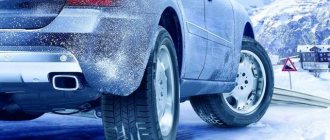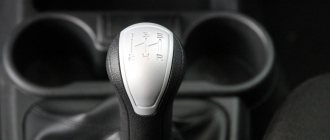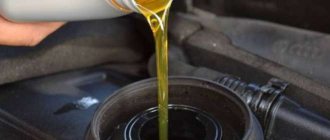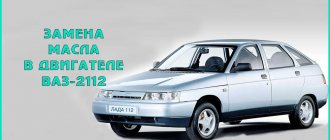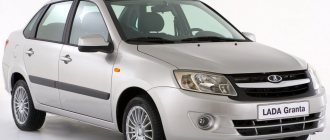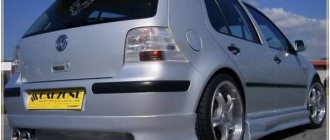Tire pressure table
Depending on the type of vehicle, the manufacturer uses different tire sizes. For you, we have collected the most popular data for the tire pressure of such common cars on our roads as, for example, VAZ Priora, Toyota Camry, Chevrolet Aveo, Ford Focus, Renault Logan, etc.
| Standard size | Auto examples | Recommended front pressure, atm | Recommended rear pressure, atm |
| 175/70 R13, 155/70 R13, 185/60 R13 | VAZ 2101-2107 | 1.6-1.7 | 1.9-2.1 |
| 175/70 R13, 155/70 R13, 185/60 R13 | VAZ 2108, 2109, 2114, 2115; | 1.9 | 1.9 |
| 175/65 R14, 175/70 R14, 185/60 R14, 185/65 R14, 185/70 R14 | VAZ 2110-2112, Priora, Kalina, Granta; Renault Dacia Logan; | 2.0-2.2 | 2.0-2.2 |
| 185/60 R15, 185/65 R15, 195/50 R15, 195/60 R15, 195/65 R15, 195/70 R15, 205/65 R15, 225/70 R15 | Lada Vesta, Largus; Renault Dacia Logan Kangoo; Ford Focus, Fusion, C-Max; Nissan Almera, Tiida; Toyota Auris, Corolla, Avensis; Mercedes-Benz C-Class; BMW 1-3 series; Audi A1-A7 | 2.3-2.6 | 2.3-2.6 |
| 205/55 R16, 205/60 R16, 215/55 R16, 215/65 R16, 225/55 R16, 225/75 R16, 235/60 R16, 265/70 R16, 265/75 R16 | Renault Duster, Influence, Megane; Nissan Almera, Tiida, Teana; Toyota Auris, Corolla, Avensis, Camry; Ford Focus, Mondeo Focus, Fusion, C-Max, Kuga; Mercedes-Benz E-Class; BMW 5 series; Audi A4-A7 | 2.3-2.8 | 2.3-2.8 |
* Note: With a full load, it is recommended to increase the tire pressure to the maximum value. The data in the table is advisory in nature. The exact indicators are usually written on the inside pillar of the driver's door or in the car's operating manual.
Winter tire pressure R14
What pressure should be in tires in winter? This question very often becomes the cause of disputes between car enthusiasts. The answer is very clear. The air density in the wheels of a car is calculated based on the weight of the car, type of vehicle, model, wheel size and some other parameters affecting operation. It should not diverge from what was proposed by the developer of this type of product.
Tire pressure 175/65, 185/60, 185/65 in winter should not differ from the pressure suggested in the instructions by the car manufacturer. For example, for cars of the VAZ line, the air density in the wheel should be from 2.0-2.2 atmospheres. In winter, it is allowed to inflate the wheel to the maximum value, but the car owner must take into account the weather conditions before driving and, accordingly, select the desired pressure in the wheel chamber.
Effect of tire pressure
First of all, if the tire pressure is incorrectly set, the contact patch of the rubber tread with the road changes and worsens the traction properties of the wheel. Manufacturers initially design their tires for use in the right conditions, and changing the recommended parameters usually leads to worse dynamics.
Low pressure
High blood pressure
How is tire pressure measured?
On the territory of Russia, the Atmosphere (1 atm. = 1 kgf/cm²) is accepted as the unit of measurement of air pressure in tires. In the manufacturers' tables, the Atmosphere, due to its close value, is often equated to another unit - Bar (1 bar = 0.98 atm). American automakers indicate values in PSI (1 psi = 1 pound/square inch or pound/square inch). When marking car tires, manufacturers use Kilopascal (1 kPa = 6.895 psi) to indicate the maximum permissible pressure (MAX PRESSURE). Conversion of units of measurement is carried out using the formulas:
- 1 psi = 0.068 atm
- 1 atm = 14.696 psi
- 1 atm = 101.348 kPa
- 1 bar = 0.98 atm
Important! Normal tire pressure does not depend on the brand of tires, but on the brand of your car and the recommendations of its manufacturer.
| Technical atmosphere (at or at) = kgf/cm 2 | (BAR), bar | (PSI) Pound-force per square inch | (ATM), physical atmosphere | kPa (kPa), kiloPascal | |
| Technical atmosphere (at or at) = kgf/cm2 | – | 0,980665 | 14,223 | 0,96784 | 98,066 |
| (BAR), bar | 1,0197 | – | 14,504 | 0,98692 | 100 |
| (PSI) Pound-force per square inch | 0,070307 | 0,068948 | – | 0,068046 | 6,894745 |
| (ATM), physical atmosphere | 1,033 | 1,01325 | 14,696 | – | 101,348 |
New technologies
Run Flat
One of the advanced developments of the tire giants is Run Flat technology, which, thanks to the reinforced sidewall, allows you to ride on tires without pressure and evenly distributes the contact patch and tread along the road.
Tire pressure sensors
Many passenger cars are equipped from the factory with tire pressure sensors, which automatically monitor wheel parameters and notify via the on-board computer of deviations from the recommended parameters. The signal is transmitted at a frequency of 433 MHz, and the sensors contain 3V batteries, which need to be changed periodically.
In addition, the Chinese website Aliexpress offers a cheap solution to the problem of monitoring tire pressure - mechanical sensors instead of caps on the nipple.
Airless tires
Another wonderful invention is tires that do not need to be inflated. The inner part of this slope is reinforced with a row of elastic honeycombs. This design allows you not to worry about tread punctures. Moreover, there is no need to set pressure in them, because the wheel already holds its shape. Such tires have already been produced for trucks, and for passenger cars they will appear in the near future thanks to the work of Michelin, Hankook, Bridgestone and other industry giants.
Source abc-tyre.ru
I usually pump 2.2-2.3 in all 4 wheels
Consequences of incorrect tire pressure selection
The deviation of tire pressure from optimal values should not be underestimated; in most cases it leads to negative consequences. Let us consider separately both options for changing the norm.
Low pressure
When the pressure gauge readings decrease, contact of the wheel with the road is ensured only at the extreme points of its surface. This is practically impossible to determine visually, but this situation leads to a number of troubles:
- the load on the side tracks of the tread increases, uneven rapid wear occurs;
- grip on the road surface deteriorates, acceleration is delayed, braking distance increases, and the likelihood of skidding increases;
- at high speeds, “wave formation” occurs in the side parts of the tires, which interferes with stabilizing the car in a critical situation, and also leads to destructive vibration of the tire frame;
- fuel consumption increases.
High blood pressure
When the pressure gauge readings exceed the optimal value, the wheel comes into contact with the road surface only with its central part. As a result, the following happens:
- adhesion to the road surface decreases, wheel rigidity increases, and accelerated wear of the central tracks of the tire occurs;
- when colliding with uneven surfaces, there is a risk of tire rupture;
- the load on the chassis and body increases;
- The noise level increases and ride comfort decreases.
Different pressure
However, the worst situation is when the pressure readings on all wheels are different. In this case, the car tilts towards the least inflated wheel. Fuel consumption can increase up to 10%.
At the same time, there are a number of cases when a deliberate deviation of tire pressure from the norm by 10-12% can resolve a difficult situation. For example, lowering can help out on potholes, sand, sticky mud or wet grass - the wheel artificially becomes soft and behaves like caterpillars, increasing maneuverability. A slight pumping is indicated when driving on highways at high speeds. The addition of atmospheres for the rear wheels makes it easier to carry loads.
Nissan Ti >
Comments 10
2 I download everything, for that it’s gentle))
Recommended front 2.3, rear 2.1, and if loaded then front also 2.3 and rear 2.6
I pump 2 in all wheels and don’t worry, I drive 2.2 a lot and a bit harshly, mostly alone in the car.
Manual to help: “...the recommended pressure is indicated on the plate called “Air pressure in a cold tire.” See the plate located on the B-pillar in the driver's door opening...” There is also a paint code, etc.
Source www.drive2.ru
The tire pressure of your car should be checked at least once a week. Modern tubeless tires are very sensitive to pressure, so reducing or increasing it in a tire by just 15-20% can increase its wear by up to 30% and negatively affect driving safety. Potholes, speed bumps, curbs - driving over them causes your tire pressure to drop.
We will tell you what pressure should be in a car's tires in winter and summer, and how changing it affects the car's behavior on the road and tire tread wear.
Below in the text you will find tables of tire pressures for cars by brand and wheel size, which present the most popular car models in Russia.
And it will be much easier for you to understand all kinds of symbols on wheels if you have at hand a decoding of the tire markings (indices of design, speed, tire load, etc.).
Tire pressure in winter and summer
So, when choosing tires, you need to be able to decipher tire markings, take into account speed indexes, tire loads, etc. Please note that in order to understand what pressure should be in the tires of a car, you need to take into account that such pressure depends not only on the tire itself, but also on the specific car.
Pressure recommendations are indicated by the manufacturer himself. In other words, if you install the same tires on different cars (same manufacturer, size, etc.), the recommended tire pressure may differ depending on the car.
The fact is that when a manufacturer indicates the so-called permissible standard tire sizes for a specific make and model of a car, the weight of the car and a number of other parameters are taken into account separately. For ease of understanding, at the end of the article there will be a table of tire pressures by car brand.
- Let's move on. If we talk about the pressure in a car’s tires in general, it should be borne in mind that the main task of a tire is to have the most effective grip on the road.
If the air pressure is normal, then the loads in the tire contact patch with the road will be distributed evenly. In this case, tire wear also occurs evenly, all technical characteristics and parameters of the tire are fully realized.
Maintaining the recommended tire pressure means that the car is easy to drive, cornering stability is normal, there is no unnecessary noise from the wheels when driving, braking performance is at the proper level, fuel efficiency and comfort are maintained.
In case of deviations, 3 options are possible:
- blood pressure is increased;
- blood pressure is low;
- different tire pressures;
In the case when the tires are overinflated, and when the tires are underinflated, they wear out severely, a decrease in comfort occurs, deterioration in handling, etc. To check the tire pressure, a special tire pressure gauge is used. Also note that some modern cars have a tire pressure monitoring system.
The solution independently determines the pressure indicator and notifies the driver of deviations from the norm. Such equipment can be installed standard from the factory; the option of self-installation is also allowed.
If there is no such system, check the tire pressure with the tire pressure gauge mentioned above. Please note that this should only be done on cold tires. If the pressure is higher than normal, the wheel needs to be deflated a little by releasing the air. If the pressure drops, the wheel needs to be pumped up.
The main thing is to bring the tire pressure back to normal (for all wheels). By the way, for inflation you can use a hand or foot pump (cheap and inconvenient) or a car compressor for inflating tires (more expensive and as comfortable as possible).
If we consider tire pressure in winter, tires need to be inflated in the same way as summer tires. As an example, if for 185/55 R15 tires the manufacturer of a particular car recommends pumping 2.1 atmospheres, then both summer and winter tires need to be pumped this way.
The only thing you need to take into account is that in winter there are more frequent temperature changes. It turns out that in winter you need to constantly monitor the air pressure in the wheels, and also make allowances for the fact that temperature fluctuations can lead to rapid deviations from the norm.
Simply put, the owner inflated the tires as recommended. However, when it gets colder outside, the tire pressure will be reduced. If warming occurs, then the pressure rises.
For this reason, it is necessary to check the pressure on winter as well as summer tires if the average daily temperature fluctuates by more than 4-5 degrees Celsius (for example, during the day +27, but at night the temperature dropped to +15).
Optimal car tire pressure
The main task of car tires is to provide effective traction between the car and the road. With normal air pressure in the tire, the load in the contact patch of the wheel with the road is distributed evenly, due to which tire wear occurs evenly, the car handles well and fuel consumption is within normal limits.
There are three possible scenarios in which the tire pressure will not be optimal:
- Increased pressure (tires overinflated);
- Low pressure (tires underinflated);
- Different pressure in all wheels.
Check the tire pressure with a special tire pressure gauge. This should only be done on cold tires, that is, before leaving the parking lot or garage.
If deviations from the normal pressure are detected in any of the tires (see the table below for what pressure should be in the tires of your passenger car), such a wheel must either be inflated or excess air released from it - that is, the pressure must be adjusted to norm. In one of our articles, we already talked about which car compressor is best for inflating tires.
It is worth noting that the tire pressure in winter should be exactly the same as in summer. But due to the sharp temperature change, in winter, monitoring the air pressure in the wheels needs to be approached more responsibly.
It is better to inflate your tires outside. Also, do not forget to check the tire pressure when there are significant changes in ambient temperature, and if necessary, adjust it:
- if it gets cold outside, the pressure in the tires will decrease,
- and when it gets warmer, it will rise.
It should also be remembered that while the car is moving, the tires heat up, the air in them expands, and the pressure increases, and the handling and braking properties change.
Increased tire pressure
With increased tire pressure, the load at the point of contact of the wheel with the road acts to a greater extent on the central part of the tire tread, thereby causing uneven wear of the tire.
On overinflated wheels, the car brakes worse! This happens because if the tires are overinflated, the contact patch with the road decreases, which means the friction force that keeps the car from sliding decreases. At the same time, the braking distance increases noticeably.
In just twenty minutes of driving, taking turns as aggressively as possible, the pressure in the car’s tires can increase by 0.5 atmospheres. And on long trips at high speed, the pressure in the tires can increase to 4-5 atmospheres. And modern tires are designed for this.
But if the tire has a hernia or cut, it can heat up and explode while driving. But on the road it’s a disaster.
Low tire pressure
Wheels lowered to just half an atmosphere change the behavior of the car and become unusable much earlier than expected. When the pressure is low, the load on the tire surface is distributed unevenly. In this case, the sidewalls of the tire where the tire contacts the road are subject to increased wear.
The sidewalls of flat tires are softer and bend when you turn the steering wheel. The trajectory of the wheel and tire do not match, so the car responds to the steering wheel late.
Moreover, if the tire pressure is reduced, the wheel may even come off during a sharp turn. Therefore, it is very important to regularly check the tire pressure and maintain it within the normal range.
This is especially true in winter, since in cold weather the tire pressure can easily drop by 0.3 (or even 0.5) atmospheres.
It is also worth keeping in mind that low air pressure in the wheels leads to increased fuel consumption. Just in case, we remind you that our website has an excellent selection of tips on how to reduce fuel consumption in a car - be sure to read it, you will probably find something new for yourself.
Different pressure in car tires
The most common situation among drivers is when the pressure in all wheels is different. There can be many reasons, for example:
- Faulty spool valves;
- Uneven tire wear;
- Or perhaps you caught a nail with the wheel.
During emergency braking, in this case, the coefficient of road adhesion between inflated and lowered wheels will be different, which with a high degree of probability will lead to the car skidding or turning across the road.
If the car starts to pull even a little to the side, there is a reason to check how the tires are inflated. And remember that tires don’t last forever. Even very good tires need care.
What tire pressure should you maintain and why?
First of all, modern tires today are tubeless. So, this type of tire is highly sensitive to pressure. If the pressure decreases by no more than 1/5 or increases by 20%, tire wear increases by a third, safety suffers, the load on chassis parts also increases significantly, etc.
It is important to understand that even if the tire does not have punctures or damage, or there are no disc defects leading to loss of pressure, this indicator still changes over time as a result of temperature changes, when driving over potholes, uneven surfaces, etc.
In other words, tire pressure drops. For this reason, it is important to know what pressure should be in a car’s tires in winter, how to inflate summer tires, as well as how deviations from the norm affect tire wear, car stability, etc.
Tire pressure tables by car make and wheel size
Below we provide a table of tire pressures for domestic VAZ, GAZ and UAZ cars. If you need a tire pressure table for foreign cars , then you can download it from this link.
Source unit-car.com
|
|
What are the dangers of incorrect tire pressure?
A properly inflated tire is the key to excellent handling, moderate fuel consumption and maneuverability.
If the tire pressure is too low, the following incidents may occur:
- an increased contact patch will lead to an increase in rolling resistance - the wheel will not have a shape as close to a circle as possible, but will have an oval shape; accordingly, more fuel is consumed, and along with it, motor oil;
- flatter wheels wear out faster;
- the angle of the wheel changes, the car becomes less stable when cornering;
- hernias will appear on the court - irregularities are blown out, which can literally burst when hitting obstacles;
- lengthening the braking distance.
Pumping will also not lead to anything good:
- significant deterioration in comfort, increased rubber hardness;
- silent blocks, shock absorbers, springs, ball joints, levers fail faster, body deformations are possible;
- uneven tread wear;
- braking distance increases.
There are certain positive aspects with increased tire pressure: since the grip surface is reduced, the car responds better to the steering wheel and feels more confident when cornering.
Perhaps this is one of the reasons why the tires on Formula 1 cars are always inflated more than required.
Table of tire pressures for different models of domestic cars by make and wheel size
Table for measuring the indicator in wheels for different models of domestic cars.
The unit of measurement can be determined only after studying the basic designation. For example, BAR is a popular option for reflecting an indicator. This designation refers to the technical atmosphere. Using a special tool, the indicator is measured in bars.
On a note!
This parameter shows the ratio of pounds per square inch. The conversion of the indicator to more familiar atmospheres (bars) is carried out by dividing the resulting replacement by 14.5 (there is no need for a more accurate coefficient, because the difference, as a rule, indicates the error of the device itself).
There are other factors that influence the parameter when measuring pressure in overinflated or uninflated tires.
These important factors include the following:
- wheel diameter;
- car brand;
- type of rubber used;
- road surface;
- driving style.
What instruments are used to measure this indicator?
Instruments used to measure the indicator
To check this indicator, you need to use a special device - a pressure gauge.
This accessory is divided into three categories:
- pointer (works with a special spring);
- mechanical (based on a cylindrical spring);
- electronic is considered a more modern device on which a liquid crystal screen is installed.
The most popular is the first dial pressure gauge.
The main advantage of this development is reliability. In addition, every car owner can afford such a device due to its low cost.
Experts also highlight a shortcoming of the device. There is a possibility that it will immediately fail in the event of mechanical damage. Usually the spring breaks quite quickly, especially with a sharp impact. The second type of device is more effective - a mechanical pressure gauge. It is made in the form of a special “handle”.
Important!
The main basis of this device is a special cylindrical spring. To get an accurate answer, you can use an electronic pressure gauge. Manufacturers claim that the electronic device displays reliable information with an error of no more than 0.05 bar (atmospheres).
Many car enthusiasts, despite the manufacturer’s recommendations, are interested in what the tire pressure should be. This is important to know for the safety of tires and road safety. Improper operation of the vehicle will lead to wear and damage to the tires. If the tire pressure is within normal limits, then a comfortable/safe ride is ensured. In addition, other positive qualities should be taken into account:
- the car is easy to drive;
- fuel is consumed in a minimum amount;
- tires wear out only after a few years.
You may be interested in Review of Nordman winter wheels
To make it easier to determine the norm, a table of car tire pressures will be presented below.
Calculation table
Speed indices T - up to 190 km/h, H - up to 210 km/h.
Load capacity indices: 82-475 kg.
Rim offset (ET) is the distance from the mating plane of the disc to the middle of the rim.
Tables of recommended tire pressures for different types of cars
What pressure should a car's tires have? With the current level of competition between automakers, each of them puts the safety, reliability, and comfort of their product first. Therefore, factory standards are verified, tested, optimal values that should be adhered to.
If you are unable to find your car manufacturer's recommendations for the correct pressure, you can call any official dealer of the company or use the following table of average values for all brands of cars and trucks:
What should the pressure be in winter?
Recommended value in winter
The recommended tire pressure for the VAZ-2110 should be indicated on a special sticker. As a rule, this information is indicated on the car body on the driver's door, less often on the glove compartment door.
In winter, it is recommended to lower the wheels (that is, you need to install tires with a small minimum diameter). However, some experts argue that the degree of their pumping does not depend on the season. By installing small tires, ideal stability, smoothness and safety are ensured when driving on ice.
For the VAZ-2110 model, the manufacturer recommends maintaining tire pressure at 1.9 kgf/cm³ for front and rear wheels of size 175/70 R13 and 2.0 kgf/cm³ for 175/85 R14.
According to some drivers, in winter the pressure in the wheels of a VAZ-2112 vehicle should be less than in summer. This was confirmed by experts when this indicator in tires, especially in winter, decreased significantly.
You might be interested in this About tires for Nissan Almera G15 cars
If this indicator decreases significantly, then deterioration in controllability can be expected. Accordingly, fuel consumption increases and service life decreases by approximately 30%. With increased tire pressure in winter, a passenger car loses stability.
Important!
When choosing the optimal tire pressure for the VAZ-2110 2020, it is worth remembering some of the manufacturer’s recommendations. For example, a car with underinflated tires can drive much smoother on rough roads. Unfortunately, in this case, rubber wear increases.



